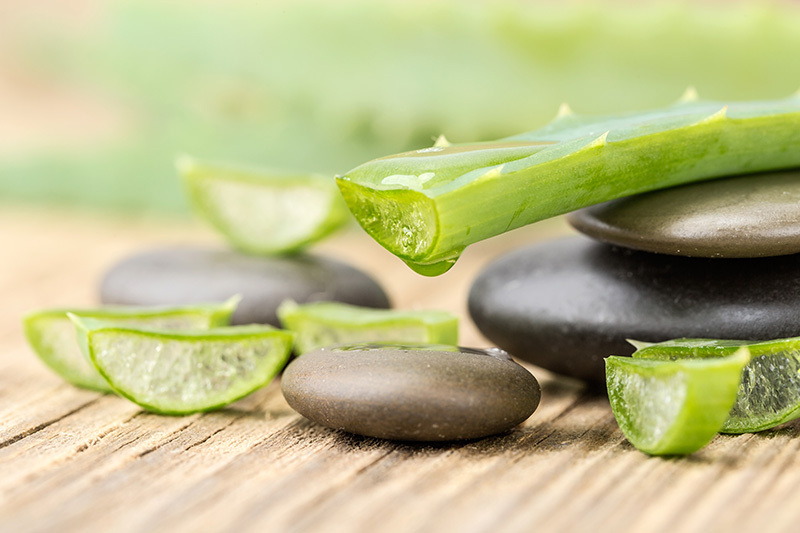Beyond the Blossom: 7 Unheard Facts About Tulips
Posted on 12/06/2025
Tulips--the word alone conjures up images of colourful spring blooms swaying in the wind across Dutch landscapes. But did you know that these iconic flowers hide a fascinating history, unique botanical secrets, and global connections that stretch far beyond their magnificent petals? In this in-depth article, we unveil seven lesser-known facts about tulips that are bound to surprise and delight flower enthusiasts and gardeners alike. Whether you’re here to learn about their mysterious origins, their deep-rooted symbolism, or intriguing roles in history, you’ll soon discover why tulips are so much more than just another garden beauty.
The Global Journey of Tulips
When we think of tulips, images of Dutch flower fields instantly come to mind. But tulips have a much more expansive and interesting global heritage than most people realize.
Fact #1: Tulips Originally Hailed from Central Asia
Although the Netherlands is renowned worldwide for its sprawling tulip fields, tulips are not originally Dutch. Tulips originated in the ancient mountainous regions of Central Asia, specifically the vast steppes spanning modern-day Kazakhstan, Uzbekistan, and surrounding areas. Nomadic tribes revered these flowers, drawing upon their vibrant colours as inspiration in their textiles and art.
- Botanical evidence points to wild tulips (such as Tulipa sylvestris and Tulipa gesneriana) thriving in the stony foothills, eventually spreading westward with migrating peoples.
- Tulips were introduced to the Ottoman Empire (modern-day Turkey) in the 16th century, where they became a symbol of abundance and paradise.
- Legendary Sultan Suleiman the Magnificent popularized tulip gardens in Istanbul, launching what would later be known as the ‘Tulip Era’.
From these exotic beginnings, tulips embarked on a fascinating journey--reaching the Netherlands by the late 1500s, where they flourished commercially and culturally in ways unequaled anywhere else.

Tulips and Their Surprising Economic Impact
Fact #2: The Tulip Mania Craze Sparked the World’s First Economic Bubble
One of the most astonishing and little-known facts about tulips is their association with the world’s first recorded economic bubble. In the 17th century, the Netherlands experienced a phenomenon called Tulip Mania.
- Tulip bulbs became a highly sought-after luxury item, with rare varieties fetching prices higher than houses and entire year’s wages.
- At the height of the craze around 1637, people used their life savings, land, and even livestock as collateral for tulip bulb purchases in the hope of enormous profits.
- The bubble eventually burst, leading to dramatic financial losses for many, but leaving tulips firmly entrenched in Dutch culture and iconography to this day.
Today, historians look back at Tulip Mania not just as a curiosity about tulip flowers, but also as an enduring lesson in market speculation relevant even in modern economics.
The Secret Life of Tulips
Fact #3: Each Tulip Colour Has Its Own Unique Meaning
While it is common to admire tulips for their beauty, their colours carry distinctive and powerful symbolism in cultures around the world:
- Red tulips represent deep love and passion, often used in romantic gestures and bouquets.
- Yellow tulips stand for cheerful thoughts, hope, and friendship.
- Purple tulips symbolize royalty and elegance, making them a favourite among dignitaries and special occasions.
- White tulips signify purity, forgiveness, and sometimes forgiveness after a quarrel.
- Black tulips--a rare cultivar--are associated with mystery and sophistication.
- Multi-coloured tulips traditionally express beautiful eyes and admiration for individuality.
Understanding the meaning behind each tulip colour can make arranging bouquets more meaningful, whether you’re expressing admiration, love, sympathy, or celebration.
Hidden Biological Wonders within Tulips
Fact #4: Tulips Have a Fascinating Adaptive Mechanism
Tulips are more than just a pretty face. These amazing plants have evolved unique adaptive features for survival, especially in harsh environments:
- Unlike many spring bulbs, tulip leaves and stems continue to grow after the flower has emerged. This means a freshly cut tulip stem placed in a vase will often elongate noticeably during the first days in water.
- This trait allows wild tulips to adjust the height of their blossoms depending on surrounding vegetation, ensuring maximum exposure for pollinators.
- Tulip petals close at night and during rainy weather to protect delicate reproductive parts--a phenomenon known as “nyctinasty”.
*If you’ve ever been surprised by the changing posture or growth of your tulip arrangement on the table, now you know why!*
Unexpected Uses of Tulips Throughout History
Fact #5: Tulips Were Once Used as Food--With Mixed Results
A fact not widely discussed is that tulip bulbs have served as food in times of crisis. During the severe famine of World War II, particularly in the Netherlands, desperate circumstances led many people to turn to tulip bulbs for sustenance.
- The starchy bulbs were often boiled or baked as substitutes for potatoes or flour, although their taste and safety were dubious.
- Some tulip bulb parts are edible, but others are toxic and can cause mild to severe symptoms if ingested in quantity.
- Dutch family stories still recount the bittersweet memories of survival--including recipes that have thankfully faded into history.
Today, tulip bulbs are best admired in gardens and bouquets, not kitchens, underscoring how the flower reflects both hardship and hope in human history.
The Science Behind the Variety
Fact #6: There Are Over 3,000 Registered Tulip Varieties!
When it comes to the incredible diversity of tulips, there’s a world of choice for gardeners and florists:
- Officially, there are more than 3,000 types of tulip cultivars catalogued globally, divided into about 150 species within the Tulipa genus.
- These varieties are grouped into classes--like Single Early, Darwin Hybrid, Parrot, Lily-flowered, Fringed, and Double Late--each with distinctive petal forms, blooming times, and colour patterns.
- Breeders continuously develop new hybrids, pushing the boundaries of colour, form, and disease resistance.
*From classic shapes to unique, frilly blossoms and almost every colour imaginable, there’s a tulip for every taste and occasion.*
A Symbol That Transcends Borders
Fact #7: Tulips Carry Profound Symbolism in Many Cultures
Tulips are much more than horticultural icons--they are woven into the tapestry of cultural identity in countries all over the world.
- In the Ottoman Empire, tulips were symbolic of paradise, spiritual reflection, and prosperity. The flower even influenced tile patterns and imperial attire.
- In Iran and Central Asia, tulips appear in poetry, art, and folklore, emblematic of enduring love and sacrifice.
- In the Netherlands, tulips represent both national pride and resilience--celebrated annually at flower shows and public festivals (such as Keukenhof Gardens and the National Tulip Day in Amsterdam).
- In modern floral language, tulips express honest emotions, sincerity, and--unlike roses--carry a sense of renewal and cheerful hope.
*Whether as a national emblem or a gift among friends, a simple tulip bouquet carries a weight of meaning that bridges continents and centuries.*

Caring for Tulips: Tips You Never Knew
Beyond their beauty and stories, let’s not forget the practical side of tulips. Here are handy tulip care tips that can make all the difference:
- Cut tulips will last longer if you trim their stems diagonally and change the water every two days.
- Keep your tulip arrangement away from direct heat or sunlight, which can cause wilting.
- Tulips don’t require floral preservative, but adding a penny or a slice of lemon to the water may help prolong freshness.
- If planting bulbs in the garden, select a well-drained, sunny site and plant 6-8 weeks before the first hard frost in autumn.
- After blooming, allow foliage to fade naturally--this ensures energy is stored in the bulb for next year’s flowering.
Proper care ensures that your tulip flowers, whether in a vase or a flower bed, will stay vibrant and healthy for as long as possible.
Conclusion: Tulips Beyond the Blossom
Tulips embody far more than fleeting springtime beauty. From their adventurous journey across continents and their role in history-changing economic events, to surprising culinary uses and myriad symbolic meanings, tulips are a flower of both substance and spectacle. As we’ve explored these seven unheard facts about tulips, it’s clear that their allure extends beyond the garden, giving us fresh appreciation for one of the world’s favourite flowers.
So, the next time you gift or receive a bouquet of tulips, let these fascinating stories and secrets enhance your admiration. After all, there’s so much more to tulips than meets the eye--making them nature’s true masterpieces in every sense.
Want to cultivate your own piece of history? Embrace the magic of tulip varieties and share their remarkable tales with fellow flower enthusiasts today!
Latest Posts
Achieve Long-Lasting Poinsettia Beauty with Minimal Effort
8 Compelling Facts You Never Knew About Sunflowers
Three Simple Tricks to Keeping Your Flowers Looking Fresh







